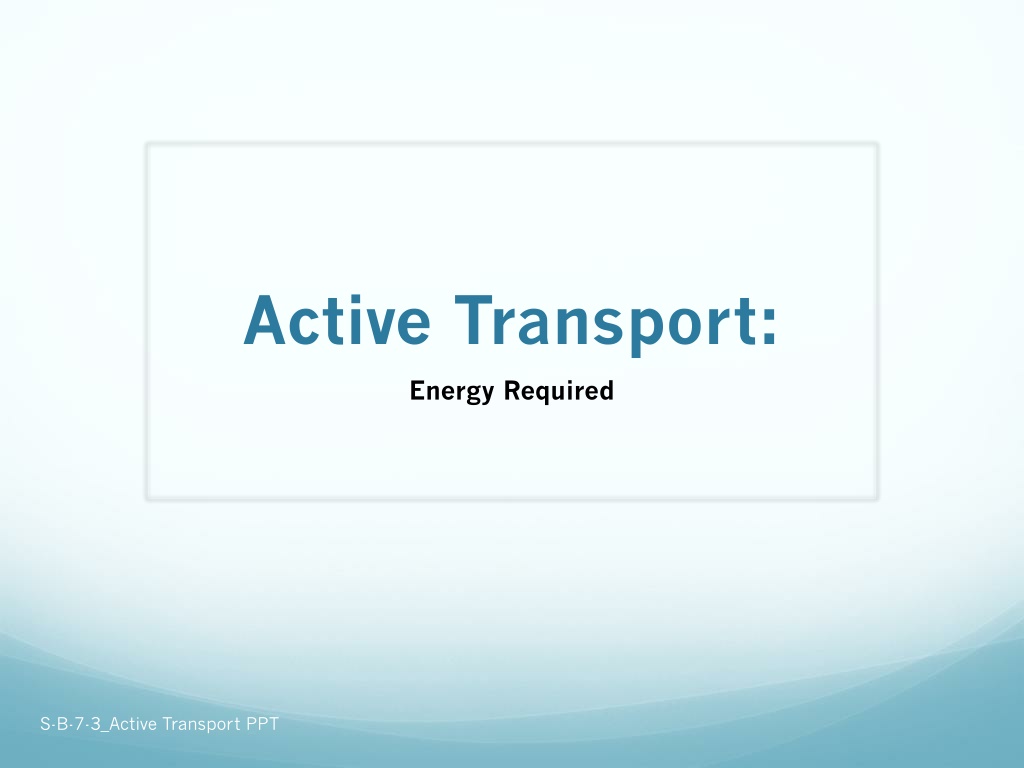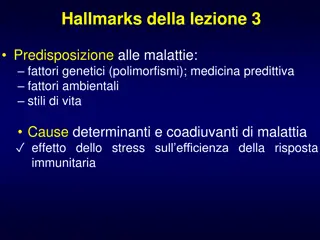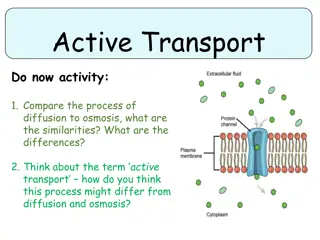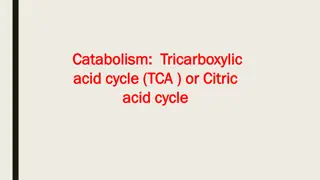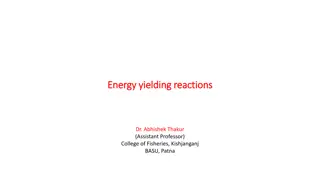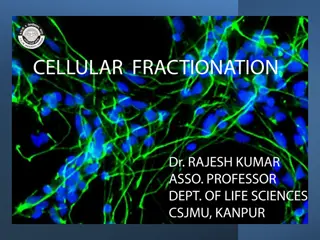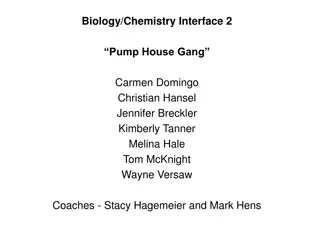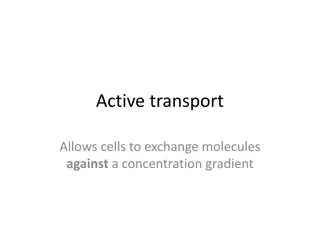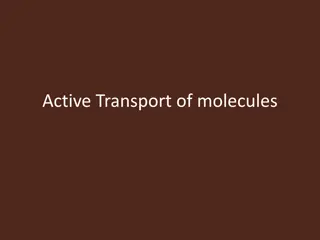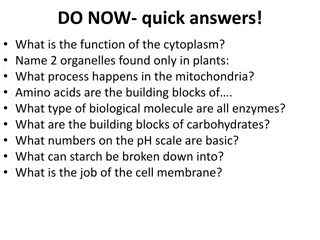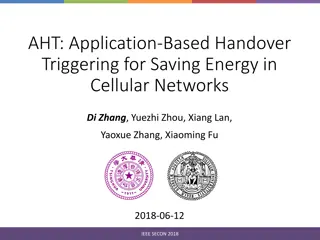Understanding Active Transport: Energy-Driven Cellular Processes
Active transport is a vital process in cells that require energy in the form of ATP to move materials across the plasma membrane against their concentration gradient. This process involves pumps, endocytosis, and exocytosis. The sodium-potassium pump in nerve cells is a classic example of active transport. Additionally, vesicles play a crucial role in transporting materials within the cell, from the endoplasmic reticulum to the Golgi apparatus and eventually to the plasma membrane. Explore the mechanisms and importance of active transport in cellular functions.
Download Presentation

Please find below an Image/Link to download the presentation.
The content on the website is provided AS IS for your information and personal use only. It may not be sold, licensed, or shared on other websites without obtaining consent from the author. Download presentation by click this link. If you encounter any issues during the download, it is possible that the publisher has removed the file from their server.
E N D
Presentation Transcript
Active Transport: Energy Required S-B-7-3_Active Transport PPT
Active Transport Process that moves materials across the plasma membrane Requires energy from the cell in the form of ATP Materials move against the concentration gradient: low concentration high concentration 3 Kinds: Pumps, Endocytosis, and Exocytosis S-B-7-3_Active Transport PPT
Active Transport Pumps 1. An ATP molecule breaks down into ADP, releasing a phosphate group and a whole lot of energy. 2. The phosphate group attaches to a protein pump, causing it to change its shape so that it can move a small molecule or ion across the plasma membrane. 3. The protein changes shape again so that the molecule can be released on the other side. There are many types of carrier proteins and they only carry specific molecules across the plasma membrane. S-B-7-3_Active Transport PPT
Example of active transport: sodium-potassium pump in nerve cells Sodium ions are kept at low concentrations inside the cell and potassium ions are at higher concentrations. Outside the cell, it is the opposite. When a nerve message is sent, the ions pass across the membrane to send the message. After the message has passed, the ions must be actively transported back to their starting positions across the membrane. Source: www.mhhe.com/biosci/genbio/enger/student/olc/art_quizzes/genbiomedia/0645.jpg S-B-7-3_Active Transport PPT
Endocytosis When a cell actively takes large molecules into itself by folding the plasma membrane inward, forming a vesicle Source: http://kenpitts.net/bio/images/endocytosis.gif S-B-7-3_Active Transport PPT
Exocytosis When a cell actively releases large molecules by folding the plasma membrane outward, forming a vesicle Source: http://kenpitts.net/bio/images/exocytosis.gif S-B-7-3_Active Transport PPT
How vesicles carry materials from the ER Golgi apparatus plasma membrane 1. Ribosome makes a protein. 2. ER forms a vesicle (vacuole) and places protein in it. 3. Vesicle carries protein to Golgi apparatus and drops it off. 4. Protein is modified in Golgi apparatus. 5. Golgi apparatus forms new vesicle and places protein in it. 6. If protein is leaving the cell, the vesicle moves to the plasma membrane and fuses with it. 7. Exocytosis protein is moved out of the cell. S-B-7-3_Active Transport PPT
Active Transport vs. Passive Transport S-B-7-3_Active Transport PPT
Active Transport: Review Pumps, Endocytosis, Exocytosis Molecules move against the concentration gradient Requires energy from the cell (ATP) S-B-7-3_Active Transport PPT
